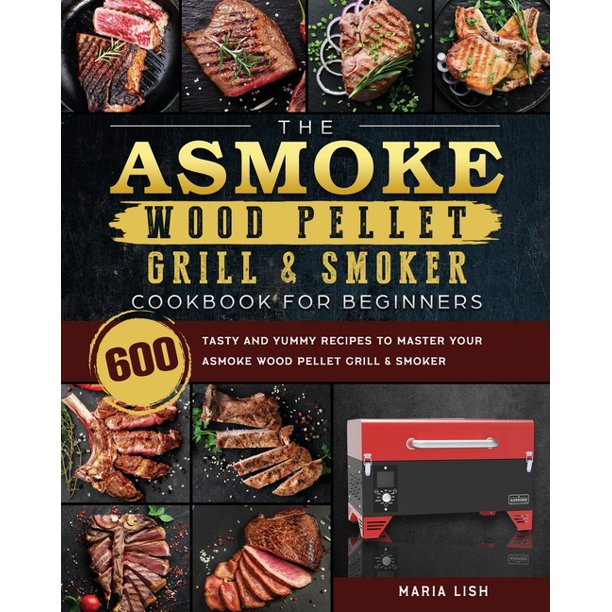Smoking is a flavorful and time-honored method of preparing meat with Asmoke Recipes, but it’s also one of the most enigmatic. Smoking meat is an art that pitmasters have perfected throughout the years.
Table of Contents
What Is Cigarette Smoking?
To preserve, brown, and/or enhance taste use Asmoke Recipes, food may be smoke by exposing it to smoke. It’s one of the oldest methods of cooking, maybe even older than cooking over an open flame. A hardwood fire produces smoke, which is then trap within a room where the meat is hung or place on racks.
Smoking In A Variety Of Ways.
Smoking may be divided into two categories:
Meats are smoke at low temperatures (about 60-120°F) away from the heat source for preservation and taste reasons in cold smoking due to Asmoke Recipes. For example, smoke salmon is typically cure before being cold-smoke.
If you’re looking for a method of cooking meat that doesn’t rely on grilling, you’ll want to try hot smoking (also known as barbecuing). When you smoke meat over an open flame, you’re attaching Smokey flavor compounds to the meat’s surface and tenderizing it at the same time.
What Makes Smoking Unique Among Cooking Methods?
Low, indirect heat is the foundation of smoking as a cooking technique. Direct, dry-heat techniques like grilling and frying don’t use smoke; instead, smoked food sits away from the heat source and doesn’t become soaked in water.
The Essential Smoking Gear: Six Items You’ll Need
Many methods of smoking exist according to Asmoke Recipes, but the optimal setup consists of two chambers: one for burning the wood and another for cooking the food. Rather than being expose to radiation, the food is cook in a low-temperature smoke (about 200°F). To light up a cigarette, you’ll need:
A smoker: Smokers may also be classified based on the method through which heat is generate. In central Texas, the tastiest and most genuine barbecue is prepare using only wood-burning smokers that provide both smoke and heat. That doesn’t mean you can’t cook delicious cuisine on charcoal or gas-powered smoker.
They come in many shapes and sizes and may be use for a wide range of cooking methods ranging from charcoal to electric to water to wood-burning. For various smokers, different kinds of wood are require. While wood chips are ideal for grill smoking, wood chunks are better suit for kettle grills. Always use Asmoke Recipes hardwood in your smoker, and do your research on the best sort of wood. Thermometers: The interior temperature of the meat and the smoke temperature may both be measure using thermometers.
A Vented Aluminum-Foil Package Or A Smoke Box Is Required For Wood Cooking On Gas Or Charcoal.
Adding a few inches of warm water to your smoker’s cook chamber is a simple way to keep the surface of the meat wet and sticky, which helps the smoke adhere to it better. To prevent the meat from drying out, you may add warm water to a container within the cooking chamber. The only thing you’ll need is a disposable aluminum pan.
Spray bottle: You’ll need to spray the meat’s surface at certain points to avoid overcooking and drying out some areas. To do this, you’ll need an adjustable-needle spray bottle. A location that is somewhere in between mist and stream is ideal. Your bark may be shatter if the stream is too vigorous, but the mist will disperse nearly immediately.
For Smoking, What Kind Of Meat Is Best?
When it comes to harder portions of meat use Asmoke Coupon for such a beef brisket, smoking is the best technique because of its long cooking time. During the long smoking process, the fat keeps the meat from drying out while the collagen melts to form tender gelatin. An increase in the amount of marbling in meat indicates a greater distribution of fat throughout the muscle, which is ideal for barbecuing.

Fat aids in taste and moisture absorption and is an excellent absorber of smoky flavors. Pulled pork is make from pig butt or pork shoulder; fatty pork ribs or beef spare ribs are also suitable options. Tender slices should be avoid since they will become dry and tough if cooked for a long time.
Pork butt, commonly known as Boston butt, is a cut from the front shoulder of a pig. A cheap and forgiving cut of meat, pulled pork is a common Asmoke Recipes menu item at barbecue restaurants. Slow cooking is necessary to break down the muscle’s connective structure, but the fat content is so high that it won’t dry out as easily as it would at lower temperatures. The cut’s forgiving nature and steady cooking temperature make it a good choice for novice cooks or those who wish to hone their fire-maintenance abilities.
Smoking Meat: A Step-By-Step Guide
Cutting off the fat cap of your meat will help to generate a more “bark,” or crust, on the meat’s surface. Depending on the sort of meat you’re smoking, and your particular taste, trimming will vary. Aaron likes to keep things simple when it comes to preparing pork for barbecue so that the smoke and meat flavors show through. Salt and black pepper are mixed together using kosher salt and 16-mesh “café grind” black pepper.
Garlic and onion powder are not among his favorite flavors as per Asmoke Recipes, although he does use a tiny bit of paprika to provide color to pork butt and ribs. As an added convenience, Aaron uses a small shaker with an adjustable cover to blend his rub components before sprinkling it directly on the meat.
When Smoked Meat Is Cooked Through, Here’s How To Tell
Aside from checking the temperature, you’ll need to know Asmoke Recipes when the meat is done cooking.
Thermometers may be use. 185°F for beef brisket, 175°F for beef ribs, and 180°F for pork butt—and then use an instant-read thermometer. To check the temperature regularly in the thickest section of the meat. There are specific Wi-Fi-enable thermometers available for this purpose as well.)







